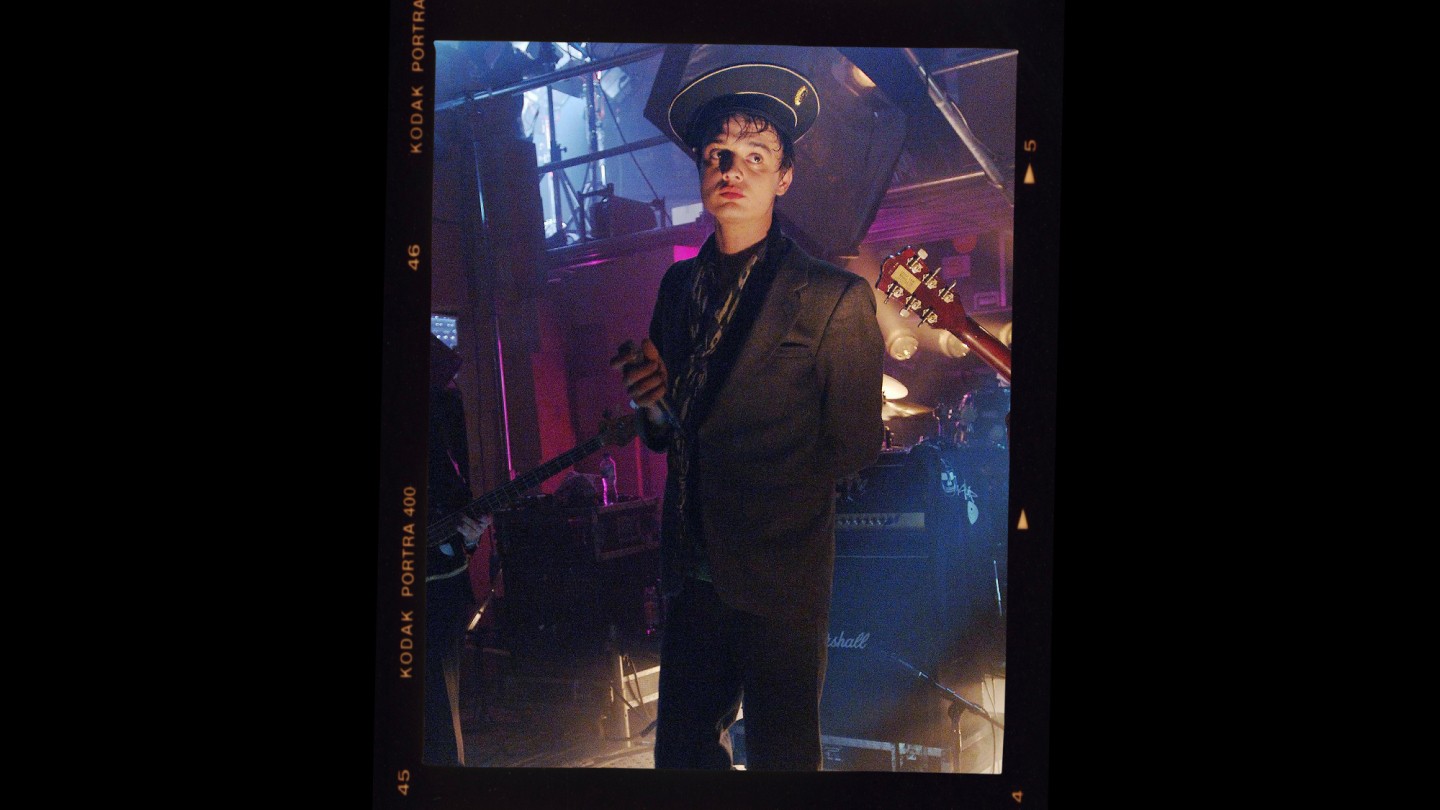
Pete Doherty of The Libertines has utilised Marshall gear throughout his career.
Guitar music is dead – or so the press crowed in the early ‘00s, as emotional alt-pop bands like Coldplay and Travis ruled the airwaves alongside NSYNC, Destiny’s Child, and the rapper Eminem.
The excitement of grunge, rave, and Britpop had dissipated. But a clutch of new bands would quickly arrive to prove that the death knell was premature. They brought with them a wave of scruffy hairdos, questionably tight jeans, and scatty sing-a-longs among legions of fans, in what was the beginning of a hedonistic new rock revival. It was a palpable scene on both sides of the Atlantic that saw indie artists dominate the music press and the radio waves for much of the ensuing decade.
Guitar music is dead - or so the press crowed in the early '00s...

The White Stripes at Reading Festival, 2002.
In the UK, budding musicians weren’t about to be left out. The Libertines started a ramshackle revolution via guerilla gigs at pubs and flats around London. They weaved their own folklore and slang into the indie scene, with tales of “Albion” (an archaic name for England) and “Arcadia” (a mythical paradise) reflecting the band’s love for literary tradition and Britishness. It made them counterculture heroes, with countless trilby-wearing, guitar-wielding, cigarette-smoking imitators following in their wake. The boozy pubs of Shoreditch had never felt so vibrant.
There was a sense of unpredictability and chaos to the indie revival – whether you were in New York, Detroit, London, or Glasgow – that only heightened the excitement aro
und it. Though it was unknown at the time, it would be one of the last great scenes of its ilk, springing up in a pre-internet age and driven by impassioned real-world communities. Today, “indie disco” club nights conjure a deep sense of nostalgia – and funnily enough, guitar music lives on.
There was a sense of unpredictability and chaos to the indie revival

The Strokes backstage at the Fillmore.
The Strokes were the first big band of the era, igniting an explosion of enthusiasm for Julian Casablancas’ nonchalant drawl and a lo-fi sound that drew from The Velvet Underground, The Ramones and more. At the same time, sonically adjacent acts like The White Stripes and The Black Keys were giving exposure to a garage-rock revival in the midwest. All the while, the indie scene in downtown Manhattan was bursting into life via art-punks Yeah Yeah Yeahs, alt-rockers TV on the Radio, and angular post-punks Interpol.
So vivid was this cultural microcosm that it became the subject of a critically-acclaimed oral history years later. Lizzy Goodman’s 2017 book ‘Meet Me In The Bathroom’ (named for a song by The Strokes, and later adapted to film in 2022) would regale foggy tales of a new New York where the thriving music industry of the ‘90s had collapsed as the real estate market in Lower Manhattan and Williamsburg boomed. Young people at this time crying out for a sense of community in the wake of the 9/11 terror attacks – and they found it at parties and rock shows. Venues like the Mercury Lounge and Arlene’s Grocery became focal points for the scene just as another iconic venue, CBGB, inched towards closure.



New York art-rockers Yeah Yeah Yeahs pose for a photo. Kyp Malone of TV On The Radio performs live. The Black Keys perform in 2008.
Recommended
All

